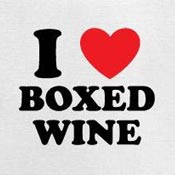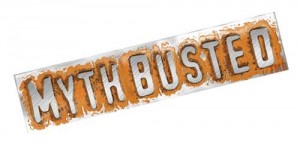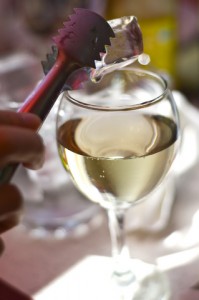by Lorri | Jul 6, 2011 | UnCorked
 As the temperatures rise, summer menus lighten and we look for unique, refreshing ideas and tastes. The following are some of our favorite summer wines, along with food pairing suggestions.
As the temperatures rise, summer menus lighten and we look for unique, refreshing ideas and tastes. The following are some of our favorite summer wines, along with food pairing suggestions.
Wines from Gruner Veltliner grapes are a great match with fresh herbs. Many of our dishes are simple and fresh during the summer months. Gruner Veltliner offers a balancing act with the herbs’ freshness and the simplicity of lighter meals.
THE VALUE
- 2010 Michlits Stadlmann Gruner Veltliner, Austria (about $18 retail)
THE SPLURGE
- 2010 Hirsch Gruner Veltliner, Austria (about $21 retail)
Pinot grigio shines with the catch of the day. Fish is a staple in the kitchen during the summer, and pinot grigio is the aristocrat of the white fish pairing — dry, crisp and austere. Keep in mind this pairing is at its best with fish’s simplest preparation, without heavy sauces and toppings, and without the flavor of a charcoal grill.
THE VALUE
- 2010 Loredona Pinot Grigio, California (about $8 retail)
THE SPLURGE
- 2010 Kris Pinot Grigio, Italy (about $15 retail)
Moscato d’Asti is the goto wine for fruity summer desserts. This summer pairing can be as simple as fresh peaches and ice cream.
THE VALUE
- 2010 Michele Chiarlo Moscato d’Asti Nivole, Italy 375 ml (about $14 retail)
THE SPLURGE
- NV Marco Negri Moscato d’Asti, Italy (about $20 retail)
Dry rose is summer’s perfect companion. Dry roses maintain summer’s laid back attitude, not needing detailed analysis or cellar notes to be enjoyed.
Simply grab a glass and begin the exploration. A few of my favorite pairings are tomatoes, mozzarella and fresh basil drizzled in olive oil, salad Nicoise and grilled vegetables.
THE VALUE
- 2010 Chateau Bonnet Rose, France (about $13 retail)
THE SPLURGE
- 2010 Turkey Flat Rose, Australia (about $20 retail)
by Lorri | Jun 29, 2011 | UnCorked
 Both popular and scorned in the 1970s and ’80s, boxed wines are making a comeback.
Both popular and scorned in the 1970s and ’80s, boxed wines are making a comeback.
Many still associate boxed wines with poor quality in much the same way many of us associated screw tops with cheap wine. And it’s true, an enormous amount of poor-quality wine did come in a box. But with more and more vintners embracing the concept, excellent boxed wines are showing up on the market.
No splurges this week, only exceptional values in a box. But don’t let the boxed-wine makers make you feel too guilty about drinking from a bottle — glass is recyclable, too.
- 2010 The Big House White, California (3 liters, about $19 retail)
A staple in our house, The Big House White may be one of the best white wine values in a box. The winery is located in Soledad, Calif., a mere “ankle iron’s toss” from the Soledad Correctional Facility aka “The Big House,” which explains the vibrant prison-themed labels. This year’s blend is a mix of 11 nontraditional grape varieties. Not only can the wine compete side by side with many $13 bottles, but its use of nontraditional grapes are a treat for your palate with a unique, refreshing taste.
- 2010 Three Thieves Bandit Merlot, California (1 Liter, about $7 retail)
“It’s what’s inside the bottle that counts. So, we got rid of the bottle.” Three Thieves winery is committed to bringing not only quality but also sustainability to its boxed wines. The idea came from one of the “thieves,” Charles Bieler, when traveling in Italy. He saw Italian shoppers throwing Tetra Packs of wine into shopping carts along with their other groceries. The comparison he made was that the packaging was accepted as a new way to buy milk and juice, so why not wine? The Bandit’s packaging is similar to products holding soy milk or chicken broth. The 1 liter boxes are recyclable, and you’re getting 33 percent more wine (250ml) than a traditional 750ml bottle holds.
- 2010 Bota Box Old Vine Zinfandel, California (3 Liters, about $20 retail)
For those looking to stay green, The Bota Box distinct statement, “Great Wine Shouldn’t Cost The Earth” will guide you in your purchase. They use the Tetra Pak that’s 100 percent recyclable, unbleached, post-consumer fiber printed with soy-based ink. Bota Box offers eight varietals, but the zinfandel continues to be my favorite.
by Lorri | Jun 23, 2011 | Tips
 I am always looking for interesting ideas and this past week my inspiration light bulb came while watching the Discovery channel show MythBusters with my children. It had me thinking of the many questions surrounding the mounds of contradictory advice in the wine world. As with many myths some are handed down from experts, some tradition and sadly, most woven in by pseudo experts. So Mythbuster style, here are some wine myths and my take on if they are confirmed, plausible or busted.
I am always looking for interesting ideas and this past week my inspiration light bulb came while watching the Discovery channel show MythBusters with my children. It had me thinking of the many questions surrounding the mounds of contradictory advice in the wine world. As with many myths some are handed down from experts, some tradition and sadly, most woven in by pseudo experts. So Mythbuster style, here are some wine myths and my take on if they are confirmed, plausible or busted.
Wines should be served in distinct glassware.
Wine professionals will often taste hundreds of wines side by side. During my humble 10 years judging on panels my “tasting” glass continues to be the ISO glass. At most events we use a single glass through whites, reds, ports and sweets. For most, it is the detergent used for washing the glass that is more distracting than the traces of the previous wines. That being said, professional tasters are not having an experience of drinking wine over a lovely meal where the rows of glasses for several courses offer a picture-perfect dining encounter. Master of wine and author Jancis Robinson thoughts, “The practicalities of having a set of the perfect gasses for each wine type defeat me and my cupboard space. The main thing is have a clear glass that is as thick as possible with a bowl on the stem that goes in towards the rim so that you can swirl to release aromas without losing either wine or vapor.” Plausible, in the sense that a wine glass will offer more enjoyment than say, a paper cup. But for the most part busted.
You must always smell the cork when the waiter hands it to you.
The purpose of the waiter offering the cork is so the consumer can check to see if the cork is broken or for the presence of mold. The process of smelling the cork does not indicate the quality of the wine or if it has been tainted from the cork. The only way of confirming if the wine is clean is by tasting. Busted.
Wines should be decanted before serving.
Professor Emile Peynaud (1912-2004), world-renowned scientist, taster and teacher, argued that oxygen coming in contact with a sound wine does more harm than good. His theory was that the longer the wine was aerated during decanting the more diffuse its aromas and less marked its sensory attributes. He advised to only decant wines with sediment and only just before serving. This theory is easily proven in fragile, fully developed 20 to 30 year old wines. Many of these wines are so delicate they can only withstand minutes in a glass before giving in to the negative impact of aeration, which is oxidation. Busted, with the exception of wines with sediment.
The “legs” or “tears” can judge the quality of a wine.
The “legs” or “tears” are the viscous streams that run down the inside of the glass. If you swirl the glass, the “legs” are more noticeable. More pronounced legs do not indicate quality, only a higher amount of alcohol. Busted.
You should age all red wines.
By no means does every wine improve with age. As much as 98 percent of still wines (those excluding sparkling and fortified) are produced to be consumed within a few years. Confusion around this myth is why many people are sadly disappointed when they open saved bottles only to find that the wine has turned to vinegar. Busted.
by Lorri | Jun 22, 2011 | Tips
 As summer heat bears down on us, it seems the appropriate time to answer a few questions that wine lovers have been asking.
As summer heat bears down on us, it seems the appropriate time to answer a few questions that wine lovers have been asking.
Can you drop a few ice cubes into your white wine to give it a quick cool down?
It seems the perfect answer to quickly cooling down a glass of wine, but actually it can alter the taste and balance. Wine, unlike many beverages, is produced with a perfect balance of water, sugar, acid, tannin and alcohol. The vineyard manager and winemaker devote time to grow and produce grapes to achieve this perfect balance. Dropping in a few ice cubes leaves it watery with the taste of a poor quality wine. Instead, try a rapid wine-chill by placing the bottle in a half-water, half-ice solution for about 10 minutes or a quick freezer-chill for 10 to 20 minutes.
Can wine really go bad from heat inside the car?
When the wine is subjected to a temperature over 100 degrees, you can be sure its quality will be jeopardized. This can happen when you buy a couple bottles of wine, place it them in the trunk and continue on your errands as usual. I like to I treat wine as I would ice cream. You wouldn’t buy ice cream and leave it in the car while you run errands or have dinner with friends.
I am looking for a cool refreshing wine to go with burgers and the weather is too hot for reds. Any suggestions?
Rose, Rose, Rose (ro-zay). This perfect summer wine offers the cool refreshing characteristics of white wine. I will stay on my rose wine soapbox until I am confident that wine lovers have given them a fair try.
by Lorri | Jun 22, 2011 | Lorri's Wine Diary
The Napa Valley Vintner’s Wine Academy is a significant wine event held annually at the Culinary Institute of America at Greystone in St. Helena, the heart of California’s wine country.
Having been invited to attend afforded an opportunity to meet a “who’s who” list of wine experts, leaps in learning and of course a reason to taste many exceptional Napa Valley wines.
A highlight of the week was a day spent in a vineyard during the harvesting of grapes. The names of those attending the academy were matched, by random drawing, with a Napa Valley winemaker. I was first out the door, paired with one of the regions recognized winemakers, Kristen Belair of Honig Winery. What would be an ordinary day for her would be a memorable event for me.
The grapes at Honig vineyards teetered between waiting and being ready to pick. It’s a balancing act dependent on the specifics of each vineyard. For instance, one vineyard may get more sunshine than another or the direction in which the vines are planted may afford faster ripening. While one vineyard may be ready, another may be a week behind, and the winemaker must await Mother Nature’s perfection.
So, being in the trenches with a busy winemaker in the midst of harvesting decisions was a true educational experience.
During harvest time, you often hear the word “brix.” To many, it is just another wine word. Brix is the term for the method of measuring “must” weight and thereby potential alcohol, or basically, when the grape reaches a certain sugar level and is ready to harvest. To test for ripeness, single grapes are picked at random throughout the vineyard. The lab at the winery will make the final decision about the picking time.
The remainder of the day was filled with lab work, tank tastings, testing’s and ended with a delightful long, leisurely lunch — a day any wine writer would look forward to experiencing again and again.
by Lorri | Jun 22, 2011 | UnCorked
 If there is a wine synonymous with Rome, it’s Frascati. For more than 2,000 years this refreshing dry white wine has graced tables throughout the world.
If there is a wine synonymous with Rome, it’s Frascati. For more than 2,000 years this refreshing dry white wine has graced tables throughout the world.
At the height of its popularity it was famously referred to as the “Wine of the Popes” and was served in almost 100 taverns in the hilltop town of Frascati, for which the wine is named. Fast-forward to today and many will agree, somewhere along the line Frascati fell from its noble popularity into a wine sometimes described as bland and dull.
Over lunch with Mauro Merz, director and head winemaker for Fontana Candida, I gleaned insight into what happened to this once popular wine. Merz considers himself an ambassador for the wine, determined to restore Frascati’s reputation as exciting and vivacious.
He believes the main cause for its popularity plummet was declining quality caused by massive overproduction. Today the moving force is toward better-quality wines. In the 1980s, Frascati producers, led by Merz, began a renewed emphasis on quality winemaking with strict control of yields, requiring numbered bottles and banning bottling outside the region. This quality control also meant going back to the base of great Frascati, the malvasia grape, and restricting certain poorer quality clones used in the past.
What has remained constant through centuries of Frascati’s up-and-down journey is terroir. The vineyards are cooled by maritime breezes and are on nutrient rich volcanic soil, thanks to Lazaile, the nearby volcano. These lower temperatures matched with rich soils make for strong, healthy vines.
After tasting Fontana Candida’s Frascati bottlings my palate can praise with confidence an affirmation to Merzs’ intentions of once again making a vibrant and vivacious white wine. If in the past you were turned off because of quality, now is the time to give Frascati another try.
THE VALUE
- 2010 Fontana Candida Frascati, Italy (about $8 retail)
THE SPLURGE
- 2009 Fontana Candida Luna Mater, Italy (about $25 retail)
 As the temperatures rise, summer menus lighten and we look for unique, refreshing ideas and tastes. The following are some of our favorite summer wines, along with food pairing suggestions.
As the temperatures rise, summer menus lighten and we look for unique, refreshing ideas and tastes. The following are some of our favorite summer wines, along with food pairing suggestions. Both popular and scorned in the 1970s and ’80s, boxed wines are making a comeback.
Both popular and scorned in the 1970s and ’80s, boxed wines are making a comeback. I am always looking for interesting ideas and this past week my inspiration light bulb came while watching the Discovery channel show MythBusters with my children. It had me thinking of the many questions surrounding the mounds of contradictory advice in the wine world. As with many myths some are handed down from experts, some tradition and sadly, most woven in by pseudo experts. So Mythbuster style, here are some wine myths and my take on if they are confirmed, plausible or busted.
I am always looking for interesting ideas and this past week my inspiration light bulb came while watching the Discovery channel show MythBusters with my children. It had me thinking of the many questions surrounding the mounds of contradictory advice in the wine world. As with many myths some are handed down from experts, some tradition and sadly, most woven in by pseudo experts. So Mythbuster style, here are some wine myths and my take on if they are confirmed, plausible or busted. As summer heat bears down on us, it seems the appropriate time to answer a few questions that wine lovers have been asking.
As summer heat bears down on us, it seems the appropriate time to answer a few questions that wine lovers have been asking. If there is a wine synonymous with Rome, it’s Frascati. For more than 2,000 years this refreshing dry white wine has graced tables throughout the world.
If there is a wine synonymous with Rome, it’s Frascati. For more than 2,000 years this refreshing dry white wine has graced tables throughout the world.